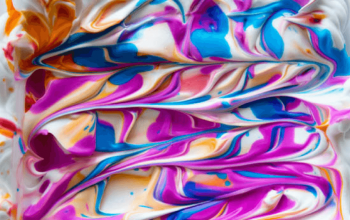Oil paint is known for quite a long drying time: fresh paint usually takes about three days to dry completely. However, if it was applied in several layers, this term will easily get even longer.
In terms of this, artists often wonder what to do if a recently made and not yet dried oil painting gets wet, or if a dry oil-painted canvas become moistured.
Since water can indeed damage the painting, let’s see what can be done to protect it.
How Water Affects Oil Paint On Different Painting Supports?
As you probably know, paint can be applied not on canvas only. Several other materials exist that can be painted on, including being painted with oil, and each of them will react to water in a different way. Nevertheless, all of these painting supports share the same reaction to excessive moisture: the painting will be damaged in this or that way.
- Canvas supports will most likely shrink dramatically when exposed to water which will lead to the paint and ground layers cracks, flaking off, and buckles.
- If we are talking about wooden painting supports, this material will either swell or warp. As a result, the canvas can distort or even tear.
- If the paint was applied onto the laminated cards, their layers can distort and separate as a result of moisture exposure.
In general, no matter the material of the painting supports, the paint will swell and then separate when being wet. In certain cases, the paint and varnish layers can even blanch!
Ways Of Oil Painting Protection
Since water can cause such damage to the oil painting, it will be handy to learn what can be done to protect the artwork and keep it safe longer, especially if it is not hanging on the wall being stored in a garage or in the attic.
- Dust the painting regularly with a dry natural brush, for instance, with a Japanese one. The surface and edges of an oil artwork collect grime and dust too fast so such a cleaning needs to be done twice a year.
- Do not clean the painting with alcohol, water, or other chemical cleaners since these liquids will only ruin the paint layer!
- Avoid placing the artwork in a place where it will be constantly exposed to direct sunlight since it may lead to dramatic changes in the colors.
- Dusting must be avoided if you see the paint is cracking or chipping.
- Keep the painting wrapped in a tissue paper or any breathable fabric to protect it from moisture.
- Stock the artwork in a dry room with no temperature fluctuations to avoid the paint and varnish damage and color change.
- Never hang the painting in a place where it can be exposed to steam or any kind of water vapor, otherwise, the paint layer will get damaged.
And if you suspect your painting is not doing well, better bring it to the professional restoring center to be examined and, if needed, treated.



